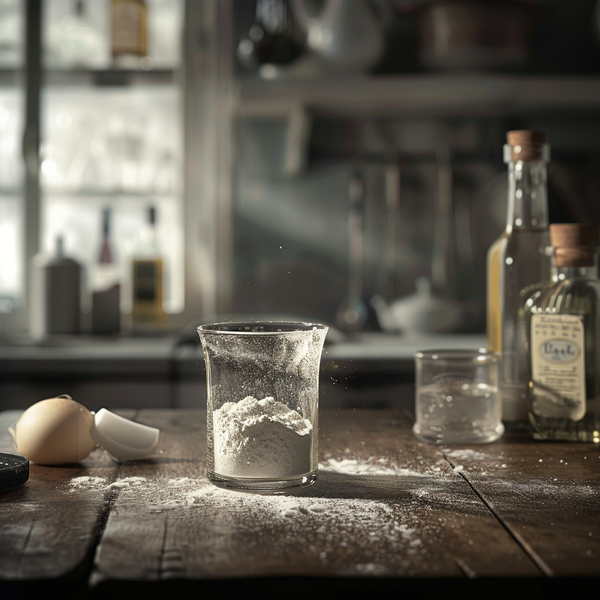
Baking powder
Baking powder is a leavening agent commonly used in baking to cause doughs and batters to rise, resulting in light and fluffy baked goods. It's a mixture of an acid (usually cream of tartar) and a base (usually sodium bicarbonate, also known as baking soda), with a buffer like cornstarch to prevent the acid and base from reacting prematurely. Here's how baking powder is used in cooking:
Cakes and Cupcakes:
Baking powder is added to cake and cupcake batters to help them rise during baking, creating a soft, airy texture. It's crucial for recipes that don't involve the mechanical leavening methods like creaming or whisking eggs.
Quick Breads:
In quick breads, such as banana bread and muffins, baking powder is used to achieve a rise without the need for yeast, making the preparation quicker and simpler.
Cookies:
Some cookie recipes call for baking powder to help the dough spread out and rise slightly during baking, resulting in a softer, more cake-like texture.
Pancakes and Waffles:
Baking powder is a key ingredient in pancake and waffle batters, contributing to their fluffiness and volume.
Biscuits and Scones:
It's used in biscuits and scones to create a light, tender crumb and a well-risen final product.
Battered Fried Foods:
Baking powder can be added to batter for fried foods, such as tempura or fried chicken, to make the coating light, crispy, and puffy.
Yorkshire Puddings and Popovers:
In recipes for Yorkshire puddings and popovers, baking powder helps achieve their characteristic high rise and hollow interior.
Soda Breads:
Although traditionally leavened with baking soda, some soda bread recipes also include baking powder to ensure a good rise, especially if the dough is enriched with additional ingredients that might weigh it down.
When using baking powder in cooking, it's important to measure accurately to ensure the right chemical reaction and to mix it thoroughly with the other dry ingredients before adding any wet ingredients. This helps to distribute the leavening action evenly throughout the batter or dough. Additionally, once the baking powder is moistened, it's important to get the batter into the oven promptly, as the leavening action begins as soon as the baking powder gets wet. Double-acting baking powder, the most common type available, provides an initial rise at room temperature when mixed with wet ingredients, followed by a second rise during baking due to the heat, ensuring that baked goods are light and airy.
Nutritional Information
calories
1.17
carbohydrates
0.55 g
fats
0 g
protein
0 g